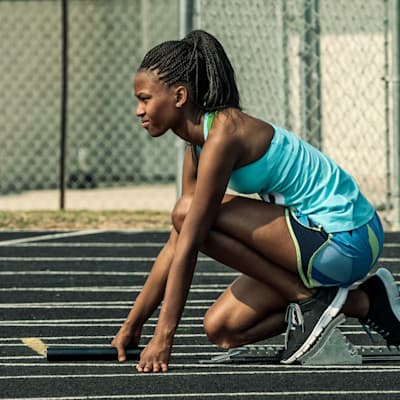About Us
The sports medicine specialists at Children's Nebraska focus on preventing overuse injuries, fractures and concussions in young athletes while providing expert care for a range of sports-related injuries. Each year, nearly 2 million high school athletes and more than 3 million children younger than 14 years are injured in sports. With proper education and guidance, about half of these injuries can be avoided.
Our team specializes in age-appropriate injury prevention and treatment, understanding the unique needs of young athletes, such as growth-related concerns and increased vulnerability to certain injuries. Our collaborative team includes experts across multiple specialties including, sports medicine physicians, orthopedics surgeons, athletic trainers, cardiologists, optometrists, behavioral health specialists, neuropsychologists and sports dieticians. We also offer a dedicated Sports Physical Therapy Program, the only program of its kind in the area, dedicated solely to the treatment and prevention of adolescent sports injuries.
If your child is injured, we provide accurate diagnosis and create a plan to return them to play safely and quickly. Young athletes should see a sports medicine specialist for concussion symptoms, persistent pain, swelling, flare-ups or if they rely on pain medications to compete.
Contact Us
Schedule an Appointment
Phone:
Fax:
402.955.6529
Additional Information:
To schedule an appointment, call 402.955.PLAY (7529) or set up a virtual visit via Children's Connect for personalized guidance and care from one of our sports medicine experts. We're often able to schedule same-day appointments and don't require a referral from your child's primary care provider.
Hours:
Monday – Friday: 8 a.m. to 4:30 p.m.
Conditions We Treat
The Children’s Sports Medicine team treats many different types of sports injuries, from sprained ankles to traumatic brain injuries. The conditions we diagnose and treat include:
Meet Our Providers
Get to know Children’s sports medicine experts. They’re passionate about preventing sports injuries in young athletes.






Treatments and Services
Our sports medicine providers work with young athletes to create a game plan that covers all aspects of treatment.
Locations
The Children’s Sports Medicine team puts advanced expertise and technologies to work at our Omaha location so athletes can get back on track.
Related Specialties

Orthopedics

Sports Physical Therapy

Performing Arts Program

Cardiology

Ophthalmology (Eye Care)

Outpatient Dietitian Services
Next Steps
Step 1: Contact Us
To schedule an appointment, call 402.955.PLAY (7529). You don’t need a referral. For your convenience, you can schedule a virtual visit via Children's Connect if you prefer.
Step 2: Schedule a Consultation
During the consultation, we’ll assess your child’s condition and make recommendations for further evaluation and treatment plans.


